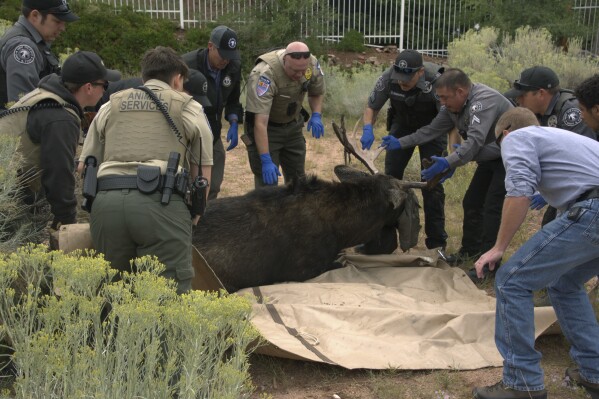Do manmade noise and light harm songbirds in New Mexico’s oil fields? These researchers want to know
SANTA FE, N.M. (AP) — A California research team is conducting a five-year ecological study of six songbird species in northwestern New Mexico oil fields to see how sensory intrusions affect the birds’ survival, reproduction and general health.
The Santa Fe New Mexican says the study by avian researchers from California Polytechnic State University will zero in on the specific impacts of noise and light pollution.
As the human population swells and generates more light and sound, researchers are curious about how those multiplying stressors might compound the challenges of climate change in New Mexico’s San Juan Basin, the newspaper reported.
Clint Francis, an ecology professor at California Polytechnic, said early studies that examined whether excessive noise and light decreased bird populations were done in more urban settings, where the birds were threatened by prowling cats, toxic chemicals and speeding cars.
 Albuquerque International Balloon Fiesta brings colorful displays to the New Mexico sky
Albuquerque International Balloon Fiesta brings colorful displays to the New Mexico sky
 Bill Clinton remembers Bill Richardson as skilled, informal US diplomat: ‘The bad guys liked him’
Bill Clinton remembers Bill Richardson as skilled, informal US diplomat: ‘The bad guys liked him’
 Wandering bull moose is captured in downtown Santa Fe, moved to habitat in northern New Mexico
Wandering bull moose is captured in downtown Santa Fe, moved to habitat in northern New Mexico
The next step is to isolate either noise or light in a rural area to see how one or the other affects the songbirds, Francis said.
He did such research in this same northwestern New Mexico region in 2005. This time the aim is to observe how the two together affect the birds in a locale where the conditions can be clearly measured in tandem.
“We try to hold everything constant, but vary noise and light pollution to try to understand whether there is, perhaps, surprising cumulative effects when you have both of those stimuli together,” Francis told the New Mexican.
The research will focus on six types of songbirds: ash-throated flycatchers, gray flycatchers, mountain bluebirds, Western bluebirds, chipping sparrows and house finches.
Francis hopes the study will uncover information that can help people adjust their noise and light to coexist better with birds.
The study is being funded by a grant of almost $900,000 from the National Science Foundation.
Disclaimer: The copyright of this article belongs to the original author. Reposting this article is solely for the purpose of information dissemination and does not constitute any investment advice. If there is any infringement, please contact us immediately. We will make corrections or deletions as necessary. Thank you.



